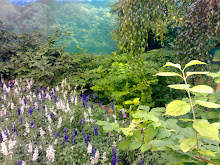Recycling
Recycling is the reprocessing of old materials into new products, with the aims of preventing the waste of potentially useful materials, reducing the consumption of fresh raw materials, reducing energy usage, reducing air and water pollution by reducing the need for "conventional" waste disposal, and lowering greenhouse gas emissions as compared to virgin production. Recycling is a key concept of modern waste management and is the third component of the "Reduce, Reuse, Recycle" waste hierarchy.
CDT Recycle Team includes of team member Chang, Daniel, Tan and Ng. Ng is a new member after register the blogspot. This recycle team provides a starting point for consumers in Malaysia searching the net for recycling information, collection places of recyclable materials, and also for the recycling company or organization to arrange trips to consumers’ doorstep for collection of recyclables. The information is for regular folks with regular household quantities of materials to recycle. The goal of this team is to help make recycling so easy and automatic that it combined into the flow of everyday life. We hope these resources are of use to everyone. Updates are available at http://cdtrecycle.blogspot.com/
Recycling Process
Collecting and processing secondary materials, manufacturing recycled-content products, and then purchasing recycled products creates a circle or loop that ensures the overall success and value of recycling.
Step 1. Collection and Processing
Regardless of the method used to collect the recyclables, the next leg of their journey is usually the same. Recyclables are sent to a materials recovery facility to be sorted and prepared into marketable commodities for manufacturing. Recyclables are bought and sold just like any other commodity, and prices for the materials change and fluctuate with the market.
Step 2. Manufacturing
Once cleaned and separated, the recyclables are ready to undergo the second part of the recycling loop. More and more of today's products are being manufactured with total or partial recycled content. Common household items that contain recycled materials include newspapers, aluminum, plastic, glass soft drink containers, steel cans and plastic laundry detergent bottles.
Step 3. Purchasing Recycled Products
Purchasing recycled products completes the recycling loop, as well as businesses and individual consumers, each play an important role in making the recycling process a success. As consumers demand more environmentally sound products, manufacturers will continue to meet that demand by producing high-quality recycled products.
Application Programming Interface (API)
An application programming interface (API) is a set of declarations of the functions (or procedures) that an operating system, library or service provides to support requests made by computer programs.
Language-dependent APIs are available only in a particular programming language. They utilize the syntax and elements of the programming language to make the API convenient to use in this particular context.
Language-independent APIs are written in a way that means they can be called from several programming languages. This is a desired feature for a service-style API which is not bound to a particular process or system and is available as a remote procedure call.
API examples
Below are listed some well known APIs.
• Windows API
• iPhone API
• Google Maps API
• MediaWiki API
• YouTube API
Wednesday, July 9, 2008
Friday, June 27, 2008
Subscribe to:
Comments (Atom)
